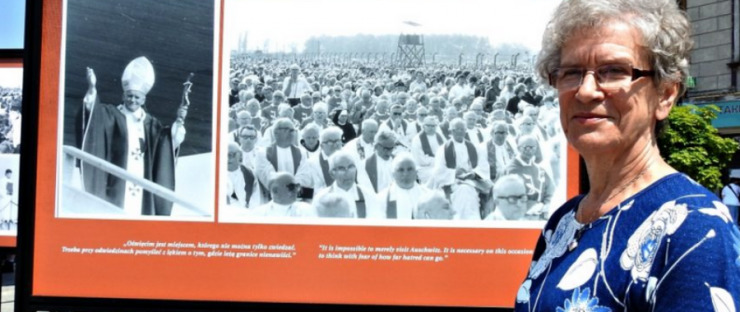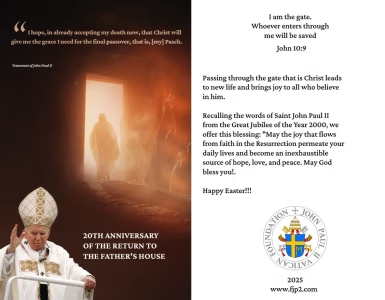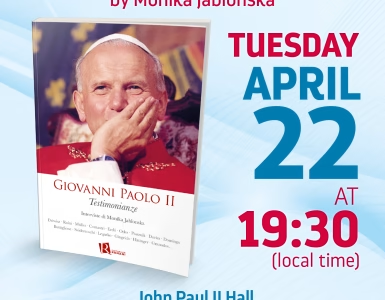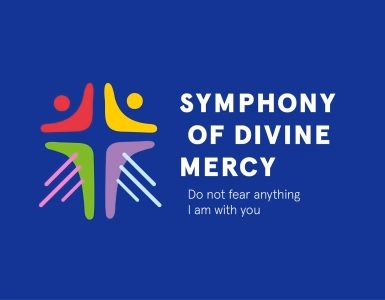How to take a picture of the Pope? Conversation with Mrs. Lidia from Oświęcim
June of this year is a time in which we especially recall the visit of John Paul II in Poland. Practically, we do it every year, but this time we did it more intensively. After all, it was the first pilgrimage of our compatriot on this position to the homeland. 40 years have passed since these events.
June 2019 has just passed, and we will once again recall those events. We will do it with a person who was in the middle of events and close to the Pope!
Camera lenses
If John Paul II came to the country today, it would be a completely different pilgrimage. Not in terms of content (the Gospel message itself), but in circumstances. The Pope would no longer have to do it under the conditions of the communist regime, he would not have to point out the path to Europe, he would probably advise us, how in the conditions of integrated Europe (with its various successes and failures), we should build not only our identity , but also the identity of the entire continent. This visit would have been completely different also for a more technical reason. Many more cameras, telephones, and smartphones would have been used. For obvious reasons (from among all pilgrimages of Karol Wojtyła to the country) this pilgrimage had the least pictures. Among all, we remember the best pictures from the Plac Zbawiciela or the visit to Gniezno and the Auschwitz-Birkenau concentration camp. The photographs were taken only by those who were designated for this – professional journalists and photojournalists. There were foreign correspondents and those less known.
Group of friends and love for the camera
Among them, there is Mrs. Lidia Foryciarz, resident of Oświęcim, whom I met while visiting this city a few weeks ago. Among others, the personal photographer of John Paul II – Arturo Mari attended the anniversary celebrations. Sometimes, we forget the Papal visit to Oświęcim, but it was (and is) extremely important. Already then, the entire world noticed it. Of course, the entire pilgrimage was ongoing under the watchful eyes of cameras from around the world, but the day at Auschwitz-Birkenau and Auschwitz Museum was in many respects symbolic and momentous. Foreign correspondents were perfectly getting political allusions in the Pope’s statements, and from their correspondence it was impossible to cut down the numbers or enthusiasm of the gathering crowds. These days were also reported by Poles – not only journalists, but also people who had other professions. The Pope in Oświęcim prayed at the wall of death, where the prisoners were executed, he visited the cell in which Maksymilian Kolbe died. That pilgrimage had the days that changed Poland – commented historians and journalists. I ask Ms. Lidia, how these events looked from her perspective.
Chemical city
At that time, she was – as she says about herself – a “young girl”. She worked at the State Museum in Oświęcim, but also, she was a photographer. That is why, with a group of friends, she was responsible for taking photos from Papal visit on the land of Oświęcim. In addition to the photographs, a movie was also created (it is kept in the resources of the Museum in Oświęcim). Mrs. Lidia and Zofia Łoboda, Józefa Mostowik, Stanisław Foryciarz (Lidia’s husband) were active in the Amateur Film Club “Chemik”. The name “Chemik” (“Chemist”) in Oświęcim means a lot. For many years, there was Chemical Factory in this city, which employed a total of 13,000 people. It is as much people as a town district has. – We were young people; we were interested in so many things. I worked at the Museum as a photographer. The film, I mentioned earlier, was made very amateurishly, on a revolving tape, says Lidia.
I ask Mrs. Lidia if it was a difficult pilgrimage. Did the government want to control it? From many memories and documents, we know that on the one hand the government wanted a peaceful course of the pilgrimage, on the other – tried, if not to interfere, then at least to know the content of the planned Papal speeches. It was especially in Warsaw and Kraków’s Błonia. – The county authority was very much taken over by this visit, but it was possible to sense that it was positive and that they were “in favor”. Initially, there was some controversy around the Mass in Brzezinka, but everything has been solved successfully – recalls Lidia. Young, “local” photographers, however, had other worries; very down to the earth and very important to them in their situation. – There were huge crowds of journalists and photojournalists. The only thing we feared was a huge number of TV cameras and filmmakers. And, that really was the case. I had permission (then the accreditation did not exist yet) for photographing in the courtyard of block 11, but I could not enter the underground location. Really, there were a great number of us. This was our main problem – Lydia Foryciarz recalls and adds: – The crowd at the monument in Brzezinka was so big that it was a wall of lenses and cameras!
Pope and background
Today, such view would not have made a greater impression on us, but then, it was different. Lidia especially remembers one picture – when the Pope had already entered the papa mobile, he turned to the photographers and made a gesture of blessing. – We thought that it was especially for us, absolutely for us, journalists and photographers. The Holy Father distinguished us.
When the Pope was in Oświęcim, we divided our work among members of our group. Together with my friend I was in the Museum. The second friend and my husband were in Brzezinka (Birkenau). When the visit ended at the Museum, we wanted to get to Brzezinka. The security guards whom we knew, we asked how they would get to Brzezinka. It turned out that they already ended their work and did not intend to go there. Feverishly looking around and trying to find something, we saw an ambulance and we asked them to take us to Brzezinka. We arrived there at the moment when the Holy Father had changed into liturgical vestments and approached the altar.
As it is well known, every photographer wants to have his/her original photographs, unique, showing an unknown story or showing the already known story, but in a new way. And at such events, when there are so many photographers in one place, it is extremely difficult. I asked Mrs. Lidia, if it was frustrating: – I always focused on the fact that the main theme is already composed and the photographer has to take care of the background, the context. John Paul II was of course the main theme, and if he was in Auschwitz, then everything had to be done so that on the photograph there is the gate, in Brzezinka – a monument; that there would be a bond on between the person and the place where he is.
Photography connected them
The husband of Lidia, Stanisław is also the author of some photographs. I ask if then they were already a couple: – We were already a married couple, we had a small child, we met in this small film club. Each of us had a camera.
Misyjne.pl





